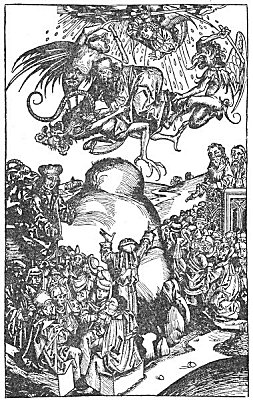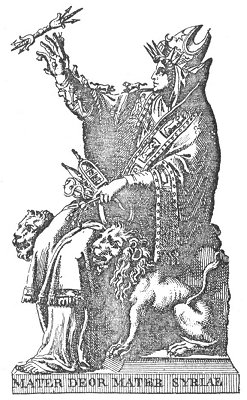Page 247
“The Word of God is His Son . . . and he is also called Angel and Apostle, for he declares whatever we ought to know (interprets), and is sent to declare whatever is disclosed.”
“Adan Inferior is distributed into its own paths, into thirty-two sides of paths, yet it is not known to any one but Seir. But no one knows the SUPERIOR ADAN nor His paths, except that Long Face” — the Supreme God. Seir is the Nazarene “genius,” who is called AEbel Zivo; and Gabriel Legatus — also “Apostle Gabriel.” The Nazarenes held with the kabalists that even the Messiah who was to come did not know the “Superior Adan,” the concealed Deity; no one except the Supreme God; thus showing that above the Supreme Intelligible Deity, there is one still more secret and unrevealed. Seir-Anpin is the third God, while “Logos,” according to Philo Judaeus, is the second one. This is distinctly shown in the Codex. “The false Messiah shall say: “I am Deus, son of Deus; my Father sent me here. . . . I am the first Legate, I am AEbel Zivo, I am come from on high! But distrust him; for he will not be AEbel Zivo. AEbel Zivo will not permit himself to be seen in this age.” Hence the belief of some Gnostics that it was not AEbel Zivo (Archangel Gabriel) who “overshadowed” Mary, but Ilda-Baoth, who formed the material body of Jesus; Christos uniting himself with him only at the moment of baptism in the Jordan.
Can we doubt Nork’s assertion that “the Bereshith Rabba, the oldest part of the Midrash Rabboth, was known to the Church Fathers in a Greek translation“?
But if, on the one hand, they were sufficiently acquainted with the different religious systems of their neighbors to have enabled them to build a new religion alleged to be distinct from all others, their ignorance of the Old Testament itself, let alone the more complicated questions of Grecian metaphysics, is now found to have been deplorable. “So, for instance, in Matthew xxvii. 9 f., the passage from Zechariah xi. 12, 13, is attributed to Jeremiah,” says the author of Supernatural Religion. “In Mark i. 2, a quotation from Malachi iii. 1, is as-
Page 248
cribed to Isaiah. In 1 Corinthians, ii. 9, a passage is quoted as Holy Scripture, which is not found in the Old Testament at all, but which is taken, as Origen and Jerome state, from an apocryphal work, The Revelation of Elias (Origen: Tract. xxxv.), and the passage is similarly quoted by the so-called Epistle of Clement to the Corinthians (xxxiv.). How reliable are the pious Fathers in their explanations of divers heresies may be illustrated in the case of Epiphanius, who mistook the Pythagorean sacred Tetrad, called in the Valentinian Gnosis, Kol-Arbas, for a heretic leader.What with the involuntary blunders, and deliberate falsifications of the teachings of those who differed in views with them; the canonization of the mythological Aura Placida (gentle breeze), into a pair of Christian martyrs — St. Aura and St. Placida; the deification of a spear and a cloak, under the names of SS. Longimus and Amphibolus; and the Patristic quotations from prophets, of what was never in those prophets at all; one may well ask in blank amazement whether the so-called religion of Christ has ever been other than an incoherent dream, since the death of the Great Master.
So malicious do we find the holy Fathers in their unrelenting persecution of pretended “haeresies,” that we see them telling, without hesitation the most preposterous untruths, and inventing entire narratives, the better to impress their own otherwise unsupported arguments upon ignorance. If the mistake in relation to the tetrad had at first originated as a simple consequence of an unpremeditated blunder of Hippolytus, the explanations of Epiphanius and others who fell into the same absurd error have a less innocent look. When Hippolytus gravely denounces the great heresy of the Tetrad, Kol-Arbas, and states that the imaginary Gnostic leader is, “Kolarbasus, who endeavors to explain
Page 249
religion by measures and numbers,”we may simply smile. But when Epiphanius, with abundant indignation, elaborates upon the theme, “which is Heresy XV.,” and pretending to be thoroughly acquainted with the subject, adds: “A certain Heracleon follows after Colarbasus, which is Heresy XVI.,” then he lays himself open to the charge of deliberate falsification.

Moe is the founder of GnosticWarrior.com. He is a father, husband, author, martial arts black belt, and an expert in Gnosticism, the occult, and esotericism.






